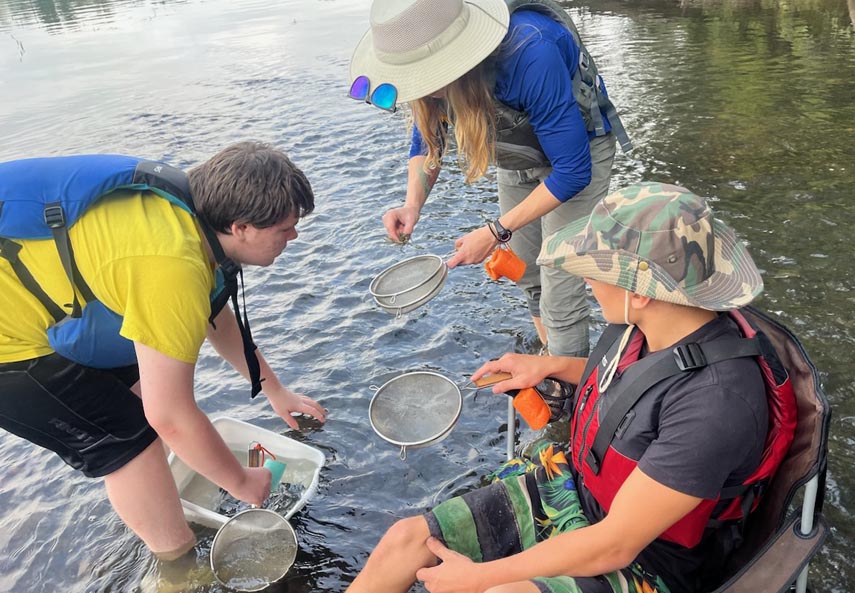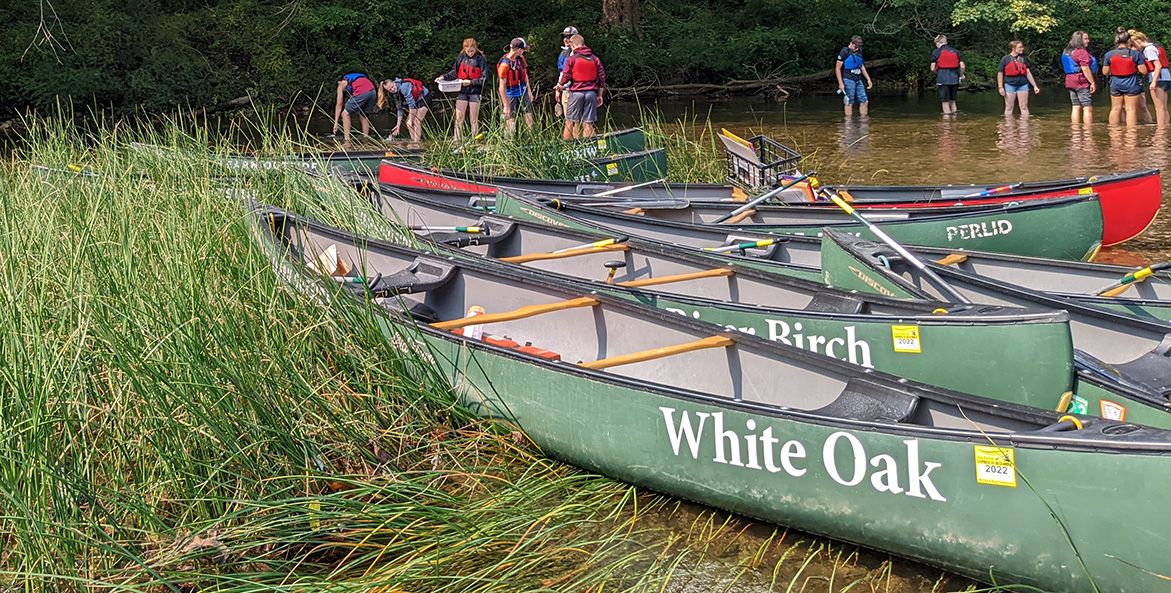For 50 years, more than 1.5 million people all across the watershed have learned with us. Our 14 field programs—mobile canoe programs, floating classrooms, and remote island campuses—that span the watershed states of Maryland, Pennsylvania, Virginia, and the District of Columbia welcome students, teachers, administrators and more to learn through experience on, in, and around the waters we love. But just what exactly happens on a CBF field experience? CBF Pennsylvania educator Adaiah Bauer walks us through a typical day in the field. Join us . . .
I work on the Pennsylvania Rivers & Streams Environmental Education Program, a mobile canoe program based in Harrisburg, Pennsylvania. We work with a wide array of schools and can be found on the Susquehanna River in Harrisburg, Selinsgrove, or Lock Haven and on other local bodies of water. On a field program, students can explore water quality through different activities looking at both biotic (living) and abiotic (non-living) factors, while using their critical thinking skills.
Upon Arrival
As students depart from the bus, you can see the excitement on their faces. Ready to be out of school for the day and experiencing something new. After students get settled, we jump into the day, discussing why the Chesapeake Bay Foundation is even in Pennsylvania and getting the students ready to start investigating a question that will drive our day: “How healthy is the Susquehanna River in Harrisburg?”
Out on the Water
Before investigating our Driving Question, the group will participate in their first team building activity: unloading canoes from the trailer, then getting their lifejacket and paddles. After all the students have what they need for the day, one educator will run a shuttle system which allows for our canoe trailer to end up at our final location. While one person is running the shuttle, the educator who stayed with the group will run them through paddle instruction, launching canoes, and what could be one of the first investigations of the day.

Field educator Adaiah Bauer shows students how to pick up a crayfish.
Tracy Hepner/CBF
Investigations
Throughout the day, we walk the students through a series of investigations to ground them in science and help them get a better understanding of their environment and the role they play within it. Here are just a few:
- Maps: We use maps to help us create a sense of place. Students can take a land use map, or a satellite map or any of our other maps and find where their community is, and then they see how the land is used around them. Is it primarily agriculture, or maybe residential, or forested? Students take many different pieces of information from the maps.
- Biotic Sample: Students will be led through a Macroinvertebrate survey. Some students will find this activity extremely enjoyable; others may find that it starts as an uncomfortable, boundary pushing experience because of their dislike for bugs. This biotic survey allows us to look at the organisms living in the water and score the stream based on the species we find—just one piece of the water quality puzzle.
- Water Chemistry: This exercise is the second piece to our water quality investigation. We can test many different things: We can look at the levels of nitrates and phosphates in the water and relate our results to the land use in the surrounding area and recent weather events. Students can use a YSI device to test dissolved oxygen and water temperature and discover that the results are ideal for certain types of fish and other organisms. We can look at the pH, and turbidity too. All or even just some of the results help us see the bigger picture, and determine the health of the river.
As a result of these investigations, students and teachers get to participate in Community Science, as all the data collected during a CBF field program gets recorded and reported.
Fun and Games
While water quality investigations are a key component to our day in the field, team building is also a critical part. We incorporate it throughout and participants practice communication skills, making memories along the way. Many will bring fishing rods, some will bring the occasional music speaker, but all find themselves discovering new things about their environment.
And, we even play games along the way! From a pollution-related game played from canoes to a sharks-and-minnows type game called “Sediment, Sediment,” we’re constantly thinking up fun, interactive ways to get our lessons across. These are fun activities we use to get the group moving and thinking about how pollution enters our local waterways.
The Next Bay Saver
As educators we have a responsibility to the students and teachers that pass through our classrooms, or nature centers, or canoes. That responsibility is to prepare them for the future, to give them the skills and confidence to go out into the world ready to become the next generation of Bay savers, conservationists, advocates, scientists, and more! We strive to give our students the tools they need to become stewards of the environment and of their own future. We hope to see you on one of our many amazing CBF Education Programs!
Interested in joining us in the field? Take a look at our website to learn more!
Adaiah Bauer, PA Rivers & Streams Assistant Manager, CBF



